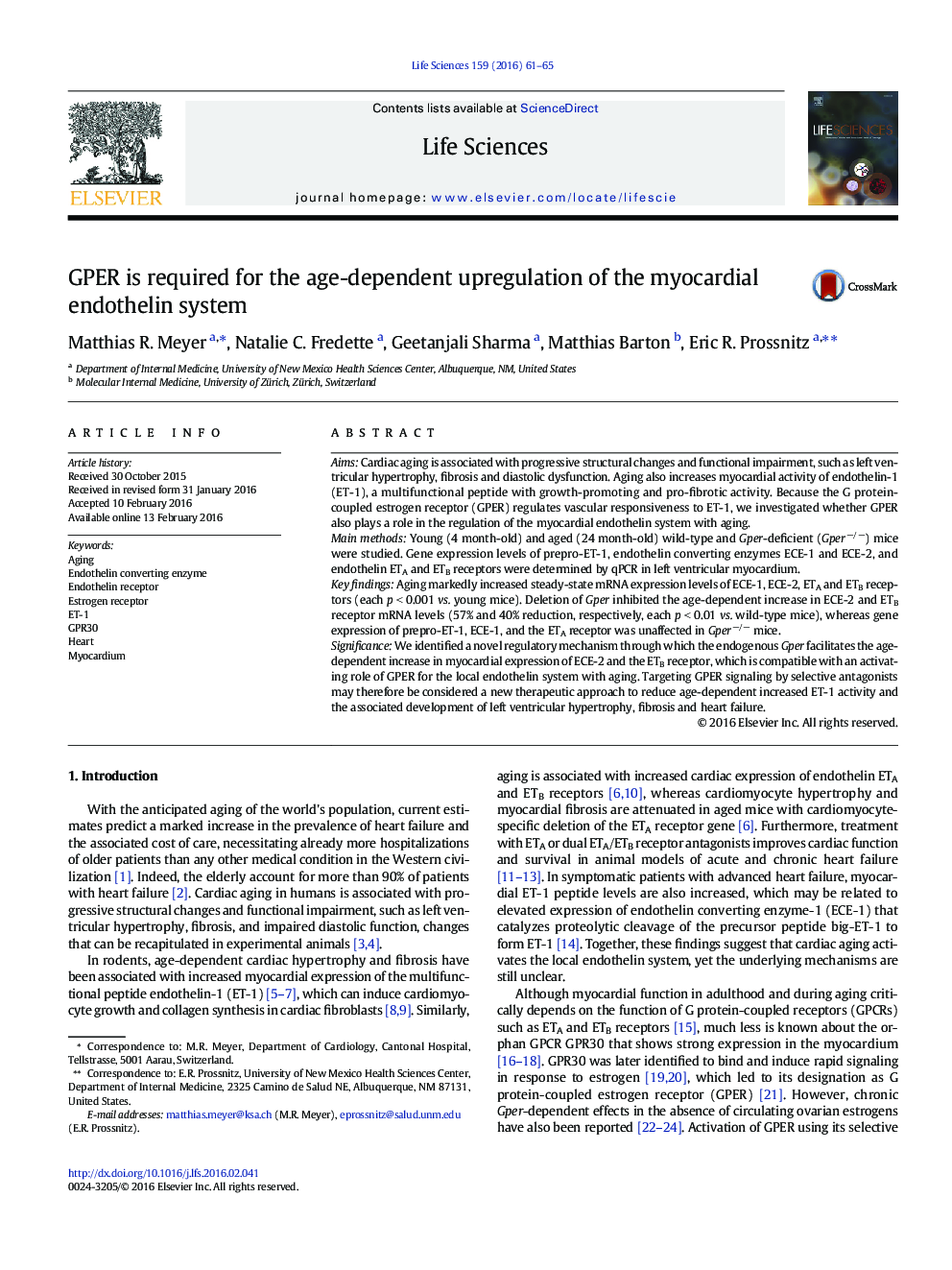| Article ID | Journal | Published Year | Pages | File Type |
|---|---|---|---|---|
| 5841301 | Life Sciences | 2016 | 5 Pages |
AimsCardiac aging is associated with progressive structural changes and functional impairment, such as left ventricular hypertrophy, fibrosis and diastolic dysfunction. Aging also increases myocardial activity of endothelin-1 (ET-1), a multifunctional peptide with growth-promoting and pro-fibrotic activity. Because the G protein-coupled estrogen receptor (GPER) regulates vascular responsiveness to ET-1, we investigated whether GPER also plays a role in the regulation of the myocardial endothelin system with aging.Main methodsYoung (4 month-old) and aged (24 month-old) wild-type and Gper-deficient (Gperâ/â) mice were studied. Gene expression levels of prepro-ET-1, endothelin converting enzymes ECE-1 and ECE-2, and endothelin ETA and ETB receptors were determined by qPCR in left ventricular myocardium.Key findingsAging markedly increased steady-state mRNA expression levels of ECE-1, ECE-2, ETA and ETB receptors (each p < 0.001 vs. young mice). Deletion of Gper inhibited the age-dependent increase in ECE-2 and ETB receptor mRNA levels (57% and 40% reduction, respectively, each p < 0.01 vs. wild-type mice), whereas gene expression of prepro-ET-1, ECE-1, and the ETA receptor was unaffected in Gperâ/â mice.SignificanceWe identified a novel regulatory mechanism through which the endogenous Gper facilitates the age-dependent increase in myocardial expression of ECE-2 and the ETB receptor, which is compatible with an activating role of GPER for the local endothelin system with aging. Targeting GPER signaling by selective antagonists may therefore be considered a new therapeutic approach to reduce age-dependent increased ET-1 activity and the associated development of left ventricular hypertrophy, fibrosis and heart failure.
